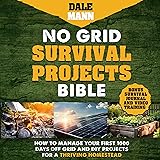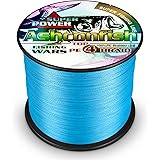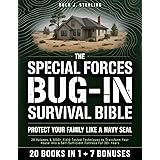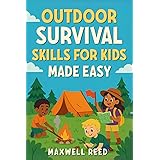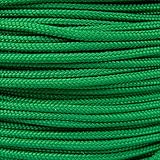In challenging circumstances, the ability to procure sustenance is often identified as a cornerstone of survival, with estimates suggesting that food acquisition can consume a significant portion of a survivor’s daily efforts. This dedication to finding nourishment underscores the profound importance of self-reliance skills, which are frequently highlighted in discussions around outdoor preparedness. The video above offers a visual exploration into these crucial competencies, showcasing the practical application of wilderness survival food procurement methods. Developing proficiency in both survival fishing and survival foraging is therefore considered an indispensable aspect of true self-sufficiency. These skills, patiently learned and carefully practiced, are designed to significantly enhance one’s prospects when facing unforeseen environmental challenges or extended periods away from conventional resources.
Mastering Survival Fishing Techniques
The strategic procurement of fish is recognized as an exceptionally efficient method for obtaining protein in a survival scenario. Fish provide a vital source of energy and essential nutrients that are often difficult to replace through other means in the wild. While angling with a rod and reel is a familiar pastime, more primitive yet effective methods become paramount when supplies are limited. Understanding various survival fishing techniques allows for adaptability across different aquatic environments, from still ponds to flowing rivers. Attention to detail and patience are consistently rewarded when these fundamental skills are put into practice.
The Strategic Art of Net Fishing
Net fishing is often regarded as one of the most productive ways to capture multiple fish simultaneously, greatly increasing the yield compared to single-line methods. A properly deployed net can passively gather food while other survival tasks are undertaken, functioning much like a silent, tireless hunter. Different types of nets, such as gill nets, cast nets, or even simple seine nets, are chosen based on the specific body of water and the target species. This method demands careful consideration of the fish’s habits and the water’s currents for optimal placement. For example, a gill net is positioned to ensnare fish by their gills as they attempt to pass through the mesh, resembling a carefully woven fence across a fish highway.
Preparing and Deploying Survival Nets
Before deployment, a survival net must be meticulously inspected for any damage or tangles that could hinder its effectiveness. The chosen location for setting the net is critical; areas with natural choke points, such as narrow channels, submerged logs, or river bends, are frequently preferred. Weighting the net’s bottom line with stones or other available materials ensures it sinks and stays put, while floats on the top line keep it upright in the water column. The net’s readiness should be periodically checked, perhaps once every few hours or at least twice a day, to collect catches and prevent spoilage. Proper care and drying of the net after use will also extend its lifespan, making it a reliable tool for future wilderness survival food procurement efforts.
The Essentials of Safe Wild Foraging
Beyond the aquatic environment, the terrestrial landscape offers an abundance of edible plants, though their safe identification requires diligent study and cautious practice. Wild foraging is a skill that connects individuals directly with their natural surroundings, fostering a deeper understanding of local ecosystems. The benefits extend beyond mere sustenance, encompassing the mental satisfaction of self-reliance and an appreciation for nature’s bounty. However, the stakes are incredibly high, as misidentification can lead to severe illness or even fatality. Therefore, a rigorous approach to learning and applying survival foraging principles is absolutely non-negotiable for anyone venturing into the wilderness.
Identifying Edible Plants: A Critical Skill
The ability to accurately identify edible plants is undoubtedly the most crucial aspect of safe foraging, comparable to a chemist precisely distinguishing between beneficial and harmful compounds. A fundamental rule, often referred to as the universal edibility test, involves a series of cautious steps to assess an unknown plant, though this method is only to be used as a last resort in extreme situations. It is far safer to learn a few easily identifiable and common edible plants in your region thoroughly rather than attempting to recognize many ambiguously similar species. Characteristics such as leaf shape, stem structure, flower appearance, and growth habitat are all important indicators that should be carefully observed. Remembering clear distinctions between safe and toxic look-alikes, much like recognizing familiar faces in a crowd, prevents dangerous errors.
Sustainable Practices for Gathering Wild Food
Ethical foraging is a principle that must be adhered to rigorously, ensuring that wild plant populations are not depleted for future generations. This responsible approach ensures the long-term viability of the ecosystem, which directly impacts sustained survival foraging opportunities. A common guideline suggests harvesting no more than 10-20% of any single plant population found in an area, leaving the majority to thrive and reproduce. Furthermore, disturbing the surrounding environment as little as possible is always recommended, preventing unnecessary damage to delicate habitats. Understanding the seasonal cycles of plants allows for harvesting at their peak availability and nutritional value, without causing undue stress to the plant itself. This mindful interaction with nature guarantees that wild food sources remain a viable option for those who follow.
Integrating Foraging and Fishing for Self-Reliance
Optimal wilderness survival food procurement is rarely achieved through a single method; instead, it involves a synergistic combination of various techniques. By integrating both survival fishing and survival foraging, a more balanced and robust food strategy can be developed, increasing overall chances of success. This integrated approach mitigates the risks associated with relying solely on one food source, which might fluctuate due to environmental conditions or seasonal changes. A diverse skill set ensures that one is not left vulnerable if a particular method proves unproductive. The ability to adapt and utilize multiple avenues for sustenance is a hallmark of true self-reliance.
Building a Diverse Survival Food Strategy
A well-rounded survival food strategy is often considered a portfolio of skills, where diversification spreads the risk and maximizes potential gains. While a net might be set to catch fish, time can simultaneously be dedicated to scouting for edible plants or setting small traps for game. This multi-tasking approach is essential in a survival situation where energy conservation and efficiency are paramount. Prioritization of tasks based on immediate needs and environmental conditions is regularly practiced. The effort invested in learning a broad spectrum of bushcraft food skills is always rewarded with greater flexibility and confidence in unpredictable wilderness scenarios.
Essential Tools and Knowledge for Food Acquisition
Beyond the intrinsic skills of net fishing and wild foraging, certain basic tools and a foundation of knowledge significantly enhance one’s capabilities. A comprehensive field guide for local edible plants and a compact fishing kit are often included in a well-prepared survival pack. The understanding of basic knot tying, rudimentary tool making, and fire starting are also considered foundational skills that support efficient food preparation and preservation. This cumulative knowledge forms a protective layer, allowing an individual to navigate the complexities of acquiring wilderness survival food effectively and safely. The ongoing acquisition of such insights is consistently encouraged for those aspiring towards complete self-sufficiency in any environment.




